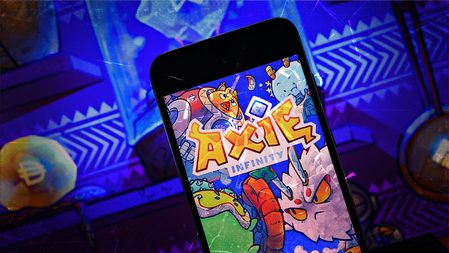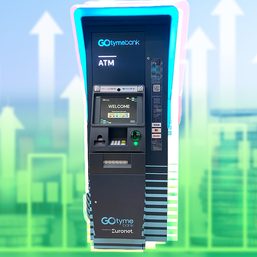SUMMARY
This is AI generated summarization, which may have errors. For context, always refer to the full article.
![[Finterest] What is cryptocurrency, and what’s with the hype?](https://www.rappler.com/tachyon/2023/12/crypto-money-laundering-reuters-scaled.jpg)
MANILA, Philippines – Since the first Bitcoin was mined more than 15 years ago, cryptocurrencies have burst into the mainstream.
Large sums of money are currently being invested in Bitcoin by some of the largest investment firms in the world, such as BlackRock, demonstrating that even conventional financial organizations are getting into cryptocurrencies. And you can see that in the price as well. Bitcoin recently rallied to new highs, hitting a record $73,000 to 1 BTC. Five years ago, that rate was less than $4,000 to 1 BTC.
Filipinos are taking note too. In 2023, the Philippines ranked 6th out of 155 countries in terms of crypto adoption, according to American blockchain analysis firm Chainalysis.
So what’s fueling all this hype? We spoke with the team at Coins.ph – the Philippines’ largest cryptocurrency exchange – to find out more about this disruptive digital asset once dismissed as a fad.
Crypto, explained
Let’s start with what crypto is, and what it isn’t.
Crypto is the “money of the internet,” as Coins.ph country manager Jen Bilango puts it. But unlike the fiat currencies (think, a dollar or peso) that most of us are familiar with, crypto is not issued by a state or government. Despite what its name might suggest, cryptocurrencies are not usually used as money to settle payments.
“It’s a digitally native asset class that’s now diverging depending on the use case and the utility of a particular token,” Bilango told Rappler.
Different cryptocurrencies can fall under different general categories. The biggest, most popular ones like Bitcoin, Ethereum, and Solana are called “blue chip cryptocurrencies” – ones that have become generally accepted and trusted by people and financial institutions. Like the blue chip stocks of the stock market, the price of these tokens are more stable.
On the other end of the spectrum, you have highly speculative tokens whose prices are much more volatile. These “memecoins” lean into the humorous side of Internet culture, with names like Dogecoin, Shiba Ina, and Pepe.
“There’s no inherent or innate value to it, but people like the speculative nature of it. Predominantly, you can see people trading based on that merit because in any asset class, there will always be people who would like to put money in and get money out – not just on the utility side of it,” Bilango told Rappler.
There are also gamified tokens where cryptocurrencies are used in the context of a game. Although this may sound like a niche use case, this is actually what kickstarted the crypto craze in the Philippines, with the meteoric rise of play-to-earn game Axie Infinity.
In games like Axie, players can earn cryptocurrencies called smooth love potions, which can then be exchanged for other fiat currencies. But remember that the value of tokens like these are a function of their utility within the game’s ecosystem – in other words, the demand and value for the token goes up and down depending on how many players there are. If the game declines in popularity, that can burn players.
Which brings us to what crypto isn’t. Crypto should not be treated like a get-rich-quick scheme. There are no guaranteed gains in crypto, just as there aren’t any in other asset classes like stocks. People can be easily misled by what is promised and what returns are delivered.
Practical uses of crypto
But what can crypto actually be used for? Coins.ph global marketing director Katrina Gonzalez said it can “democratize access to financial instruments and services.”
This concept of decentralized finance, or DeFi, removes banks, clearance houses, settlement houses, and other financial intermediaries, allowing people to directly transact with each other using cryptocurrency. The vision is to use the security of crypto’s blockchain to allow peer-to-peer financial transactions – for instance, directly making a loan to your friend with interest and collateral terms that you set.
“The core concept of decentralized finance is that you don’t need to go to one institution to be able to access financial services. You can do things peer-to-peer, you can lend, you can contribute to a pool, and then you can earn from that,” Gonzalez told Rappler.
Crypto has long touted itself as a slayer of the middle man in finance – big financial institutions, like banks and remittance centers. Another example is how overseas Filipino workers have used crypto to remit money, circumventing banking hours and the expensive fees of “pera padala” centers.
“In crypto, in blockchain, that all happens simultaneously. So we remove all the fat in the financial ecosystem. Using stablecoins, you can transfer money via blockchain instantaneously, in real time, because you don’t have to rely on intermediaries to validate a particular transaction,” Bilango told Rappler.
Crypto remittances are often done through stablecoins, a type of cryptocurrency that are protected from the price volatility often associated with crypto. Stablecoins have a constant exchange rate with fiat currencies, such as being pegged 1:1 with the US dollar.
Getting started
For most people who want to dabble in crypto, the easiest entry point would be through a crypto exchange. Using the familiar interface of an app, a user could easily exchange their pesos into Bitcoin tokens.
Those who are just getting into crypto may want to first stick with blue chip cryptocurrencies, like Bitcoin or Etherium, since these have been around for a longer time.
“Bitcoin is like digital gold. It’s your hedge, it’s a store of value,” Bilango told Rappler. “It will sustain its value because there’s only a finite amount of Bitcoin. It’s only going to be 21 million Bitcoin in existence, ever.”
Once you’ve bought your tokens, the next decision to make is when to sell. You could either do a simple buy and simple, or use more sophisticated stop-limit orders that allow you to buy or sell crypto when the price hits a certain level. But if investing in crypto isn’t what you want to do, there are still other ways you can get into the space.
“Different people will have different use cases for it. It can be for remittances using stablecoins. It can be because you go play a game, and you want to play and earn from the games you play, or you want to be able to access NFTs,” Gonzales told Rappler.
“Maybe you’re into NFTs and into the Solana ecosystem, and that’s great. Maybe you’re super excited about what’s happening in Bitcoin from an asset class perspective…. Or maybe you see opportunities in DeFi, and you’re just a trader that just looks at the charts, like technical analysis, and you see an opportunity there. It’s really not one-size-fits-all. It’s a very vibrant ecosystem,” she added.
Is crypto safe?
But before you jump head first into crypto, let’s make sure that it’s safe. Over the years, crypto has had scandals and scams mar its reputation. In 2022, the world’s second largest cryptocurrency exchange – FTX – filed for bankruptcy after its chief executive officer was convicted in a multi-billion dollar fraud case. A year later, the CEO of the world’s biggest cryptocurrency exchange – Binance – pleaded guilty to breaking anti-money laundering laws.
Is that something we should still be concerned about?
Bilango acknowledged these issues, but said that it actually proved the resilience of cryptocurrency as an industry.
“The cryptocurrency industry as a whole has been battle-tested several times. One of the biggest exchanges blew up. One of the biggest hedge funds that put money into crypto also blew up. But we’re still here,” she told Rappler.
The Coins.ph team also noted that the concerns regarding scams and fraud mostly happens on unregulated exchanges.
In contrast, local cryptocurrency exchanges that are licensed and regulated by the Bangko Sentral ng Pilipinas (BSP) – such as Coins.ph and PDAX – must comply with regulations. The central bank reviews the exchanges’ technology for vulnerabilities, checks their compliance with anti-money laundering guidelines, and ensures they have enough capital.
“BSP ensures that when you put money in [Coins.ph], that your assets are backed one is to one, so we’re not doing any hanky-panky stuff on the side,” Bilango told Rappler.
Ultimately, Bilango said that avoiding the pitfalls that newbie crypto investors fall into is all about knowing your risk appetite and being smart about where you put your money.
“Do your own research. Only invest the money you’re willing to lose. And only transact in platforms that are regulated and are monitored by your license to do that type of transaction in your country,” she said. – Rappler.com
Finterest is Rappler’s series that demystifies the world of money and gives practical advice on how to manage your personal finance.
Add a comment
How does this make you feel?


![[Finterest] Private banking: How the wealthy keep the money within the family](https://www.rappler.com/tachyon/2024/07/Finterest-wealth-between-the-family.jpg?resize=257%2C257&crop=425px%2C0px%2C1080px%2C1080px)
![[Finterest] Credit card 101: How does it work, and which one is for you?](https://www.rappler.com/tachyon/2024/06/credit-card-stock-photo.jpg?resize=257%2C257&crop_strategy=attention)
![[Finterest] How deposit insurance keeps your money safe when a bank closes](https://www.rappler.com/tachyon/2022/09/shutterstock-philippine-peso.jpg?resize=257%2C257&crop=329px%2C0px%2C900px%2C900px)
![[Finterest] How to earn on TikTok Shop, according to the app’s top vendors](https://www.rappler.com/tachyon/2024/05/tiktok-shop-top-vendors-1.jpg?resize=257%2C257&crop=310px%2C0px%2C720px%2C720px)


There are no comments yet. Add your comment to start the conversation.